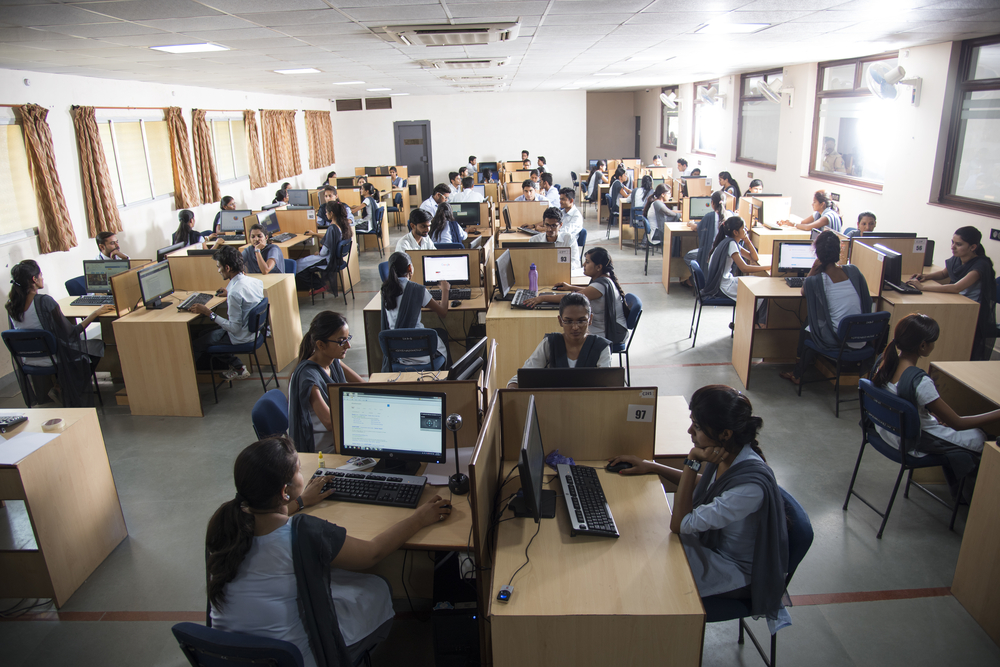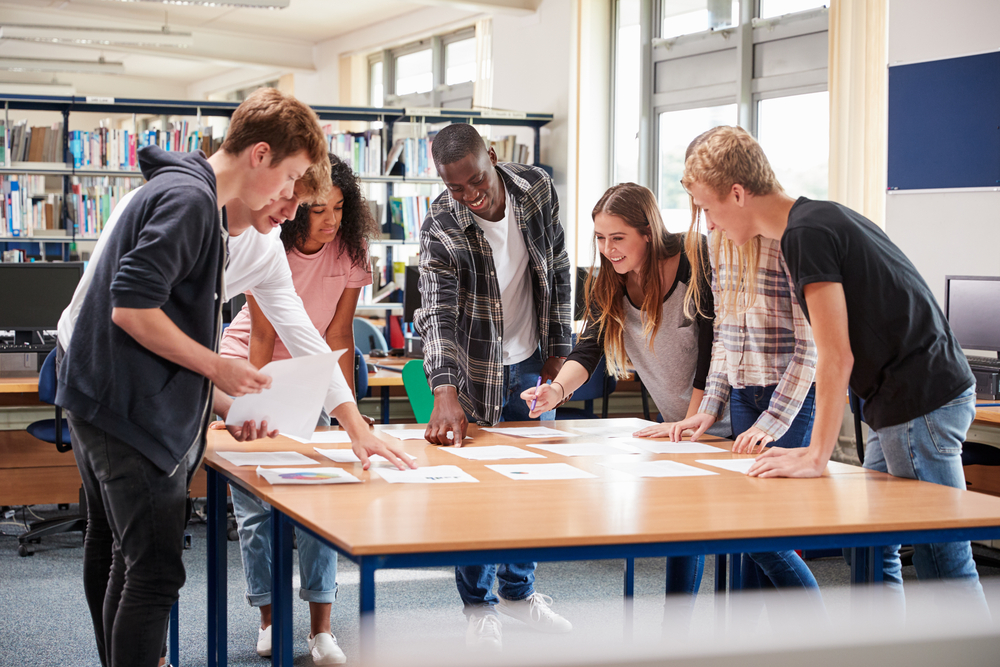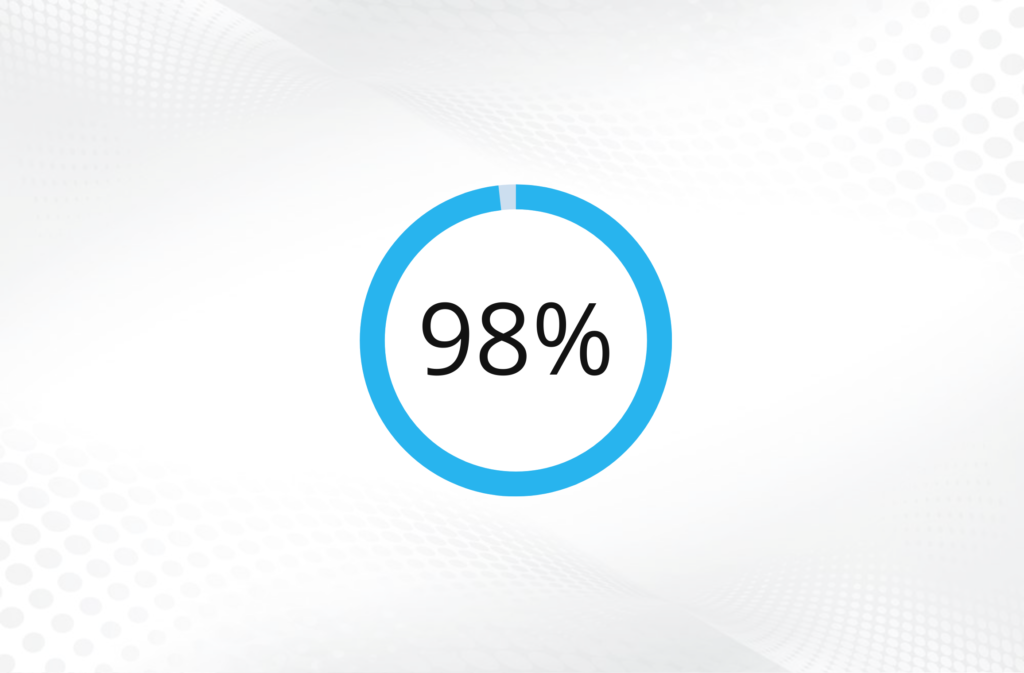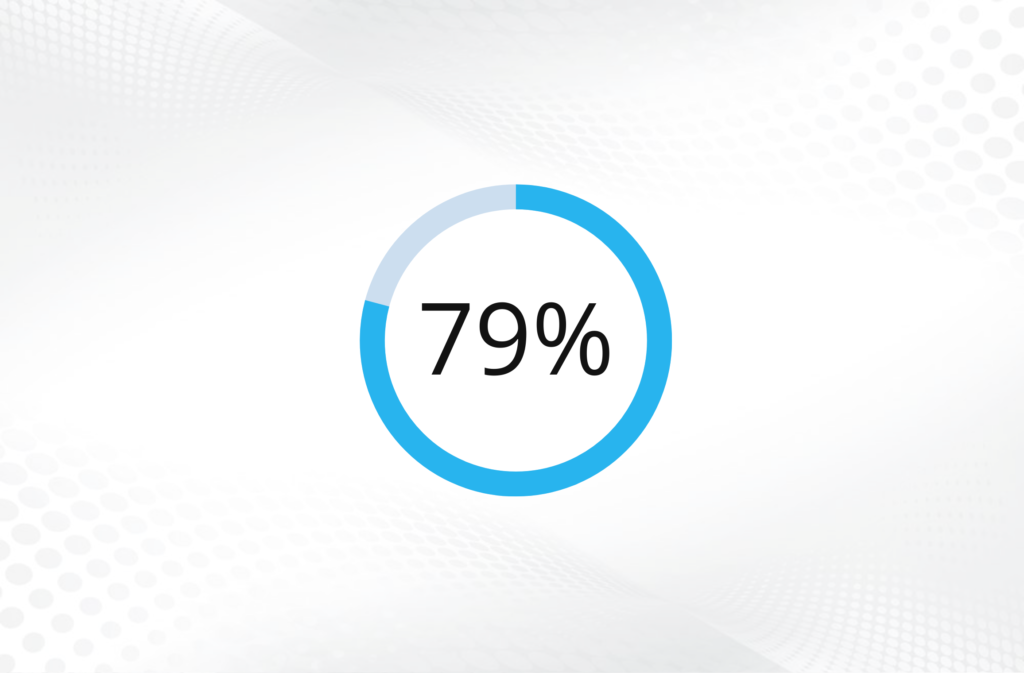Collaborative and project-based learning
In the skills-based economy of today, and indeed the future, learning needs to happen faster than ever before, and billions are invested in all kinds of training programmes. There’s massive amounts of content available on the internet as well – millions of articles, videos, e-books, and other tools – to help people learn. The one thing missing from these developments seems to be the fact that the most memorable and powerful learning actually happens when we talk and collaborate with others.
It is the conceptualising, recalling, and putting of information into practice that leads to the creation of the memory pathways that stick in our minds. This is the reason why more and more schools provide opportunities to work in groups and offer group homework assignments. This is also why teachers give students topics for group discussions after a lecture, because cohort-based, collaborative, or project-based learning are among the most useful and valuable ways to learn.
Collaborative learning, identified by experts as a particularly promising instructional approach to education, is the educational approach in which groups of two or more learners work together (on a project) to learn new concepts, complete tasks, and solve problems, thereby enhancing the learning process with key principles like group accountability and positive interdependence.
Group accountability means that the outcome for the strongest learner in the group depends on the outcome of the weakest learner in the group – which makes peer teaching a clear and important factor for each learner in the group. Positive interdependence means that the completion of a task depends on all members of the group doing their bit. The collaborative learning approach leads to improved academic achievement as it enables learners to work together with others on projects in which they are encouraged to listen to other viewpoints, articulate and defend their own positions, and reframe ideas.
Through this approach, learners are actively engaged in synthesising and processing concepts, which make educational topics really come alive and gives learners a much more comprehensive understanding than rote memorisation of facts and figures.
There are various collaborative and project-based learning approaches and their learning activities can vary widely, but some common characteristics are that the learners get to explore and apply the educational material, often on a project basis, as opposed to the teacher presenting or explaining it.
The objectives include fostering deeper learning and teaching learners academic knowledge and 21st century skills like innovation, creativity, collaboration, communication, critical thinking, and problem solving. Other objectives are teaching students to approach challenges with a growth mindset and confidence, and to build agency in terms of the learners’ own development, whether personal, social, or academic.
Collaborative and project-based learning present a considerable transition away from the typical lecture or teacher-centred approach, and towards a more student-centred approach. This does not mean that the traditional process of lecturing, listening, and note-taking is replaced altogether, but that it exists in conjunction with collaborative and project-based approaches. Some practical examples of the methods and materials used are outlined below.
Projects
Collaboration projects can last from one week to a semester, during which students need to answer complex questions or find solutions to real-world challenges. These projects typically culminate in a public presentation, body of work, or product that enables students to display the skills and knowledge learned.
Virtual meeting rooms
Project group meetings are typically held via platforms like Zoom – under the supervision of a teacher – during which each participating student has a voice and is engaged.
Discussion boards
Collaborative learning also involves the use of discussion boards, which can be used in real-time, depending on the chosen settings and platforms. Discussion boards enable all students to simultaneously respond to the same prompt and comment on each other’s ideas.
Digital whiteboards and shareable documents
Digital whiteboards enable students to share their thinking with their peers and are also ideal for formative assessments. Shareable documents allow students to complete their specific task and then pass the document on to the next student, allowing for real-time collaboration.
We’ve already briefly touched on the benefits of collaborative and project-based learning, but in this section we will go deeper into the importance of this type of education. Through collaborative learning, students get to meet experts in various fields, which offers many quality learning opportunities and fosters creativity, perseverance, and deeper engagement. This type of learning also helps students to develop skills for dealing with feedback and how to self-reflect, and empowers them to investigate and develop solutions for real-world challenges.
Communication and social skills
The need to work as a team and encourage others is at the heart of collaborative and project-based learning. It requires students to learn to value the contributions of others and develop their listening skills. Another important factor is the ability to disagree with peers in a respectful manner, and understand different perspectives instead of pushing certain points of view and ignoring those of others. This equips learners with the tools to eventually come to mutually reached decisions.
Learner autonomy
In order to be really motivated and engaged, it’s important for students to have a sense of ownership over their learning. As collaborative learning is student-centric, it provides the learner with a certain amount of autonomy over their educational process, both in a literal and figurative sense. As learners are involved in projects from conception to completion, and educators take on the role of advisors and facilitators, this leads to a strong sense of ownership, self-worth, and independence.
Meaningful collaboration
A collaborative and project-based learning approach enables learners to analyse and evaluate ideas together. Interaction between learners of the same group and between different groups helps them to learn and experience knowledge and skills together, which helps build relationships, trust, and a sense of dependability.
Taking responsibility
Another important benefit of this type of learning is that it helps learners to take responsibility and encourages them to assess themselves and their fellow students. When learning in groups, positive reinforcement helps to encourage learners to emulate behaviour that is appreciated and valued by the educators.
Critical thinking
Collaborative and project-based learning is part of a ‘thinking curriculum’ that teaches learners higher-level critical thinking, and how to learn things for themselves. The spoon-feeding of facts and knowledge is absent in this type of learning. Instead, the focus is on debate and group discussions, which enables learners to analyse topics in a more in-depth manner. The ability to analyse and understand information at a high level is critical for most careers in the future.
Interactive environment
Studying in groups offers many valuable opportunities to debate, discuss, solve misconceptions, build on each other’s ideas, and reach conclusions. This learning process is much more interesting and interactive. It encourages healthy competition among learners and motivates them to do their best.
Responsive teaching
Collaborative and project-based learning also encourages responsive teaching and contributes towards positive learning experiences. Teachers who respond positively to a diverse group of learners enhance their social, cultural, and academic development. The establishment of cultural cohesion improves respect for cultural diversity among learners and leads to an educational environment that’s especially conducive to multi-faceted learning excellence.
To give you an idea what collaborative and project-based learning looks like in practice, we’ve gathered a few examples.
Gibson Ek High School in Issaquah, Washington
This fully personalised school for project-based learning offers hands-on projects and internships. Learners advance by demonstrating competency in five key areas: personal qualities, social reasoning, quantitative reasoning, empirical reasoning, and communication. As the school curriculum is completely project-based, it does not make use of traditional grading systems.
All students take part in internship experiences, such as group field trips, career days, or job shadowing. This helps them zero in on the type of career they might have an interest in. The school schedule is free-flowing, and consists of so-called open periods, in which students work either on group or individual projects where they learn all the skills they need to succeed.
The projects, programmes, and skills training offered include design labs, design thinking, social-emotional learning, health and wellness, adaptive online maths programmes, advisory sessions, personalised learning plans, workshops, progress meetings, crash labs, and many more.
Furr High School in Houston, Texas
One of the focus areas at Furr High School is environmental sustainability. In fact, it is firmly embedded in the school’s mission and vision and the school offers its 1,100 students a myriad of hands-on projects that merge academic standards with sustainability and ecology. When learners are presented with opportunities to develop solutions for challenges that they can somehow relate to in their own lives, they are more likely to be involved in community change.
One of the projects students at Furr work on is ‘trash audit’. This project revolves around collecting rubbish from the park, bringing it to the classroom to sort through it, and recording what’s been found. Working in collaboration with a research non-profit, they determine where the litter originated from, who manufactured it, and brainstorm solutions to the litter problem.
A number of students working on the project have shared their findings at the International Youth Summit on Plastic Pollution. A student who was involved in the project says: “I feel really honoured I’ve been given this opportunity. But it’s not about me personally. We really want to hold companies accountable, so they can see what they’re doing and hopefully find a way to make products that aren’t so toxic.”
Elizabethton High School in Tennessee
Students at Elizabethton High School in Tennessee recorded a podcast about a tragic event with a circus elephant that happened over a century ago in the nearby town of Erwin, which haunts the town to this day.
The objective of the podcast was to set the record straight and enable a new, more positive story about Erwin to be told to the world. The podcast, with the title Murderous Mary and the RISE of Erwin, was created using a six-phase process for podcast design and guided the students to a final product in an interdisciplinary project-based learning unit. The project engaged the learners’ knowledge of the English language, arts, history, and social studies.
In the podcast, the true story of the infamous 1916 circus elephant hanging was told, followed by a series of interviews with various people to get to the bottom of the story. The students spoke with Erwin’s Mayor, a librarian, and others, and got to hear about various interesting initiatives that were introduced in an attempt to clear the town’s name.
Being involved in creating this podcast, the students developed high levels of expertise in various disciplines. And the introduction of their work enabled them to demonstrate their own deeper learning while creating an opportunity to teach others. The podcast won the first-ever Student Podcast Challenge, sponsored by National Public Radio, although winning was not the goal of this project-based learning experience.
The contest was an opportunity “to address academic goals by immersing students in the real work of historians and storytellers. As the project unfolded, it became less about winning and more about doing right by the story,” says English teacher Tim Wasem.
While collaborative and project-based learning offer many benefits, there are some downsides as well, and it’s critical to keep these challenging aspects in mind. Students who are either not as motivated as others, or who are introverted, might put in less effort during group work than other members of a group. This ‘social loafing’ or ‘free-riding’ can also occur when learners do not get on well with (some of the) others.
In the case of introverts, they can struggle to make themselves heard or their opinions valued. Friendships may pose another obstacle to effective collaborative learning. Surveys among learners indicate that friendships in the group often lead to more socialising than focus on the tasks at hand. Friendships can also inhibit learners from constructing good arguments and working seriously, and can lead to them becoming less critical. A student who is late for group meetings or hasn’t done his or her tasks, for instance, might not be criticised by friends in the group out of fear of ruining the friendship.
Friendships also lead to the tendency of rating peers higher than they perhaps should be rated during peer evaluation. Students all have different learning speeds as well, which poses its own challenges, and so a collaborative or project-based learning project sometimes takes longer than individual learning. Then there’s the fact that, in some cases, learners may not have worked in groups before, and therefore don’t possess the necessary collaboration skills.
Staying focused on the task may be another challenge of working in groups. Educators will need to thoroughly explain the objectives of the project or task, offer lots of encouragement, and find ways to hold each learner accountable for his or her part throughout the process.
Assessment of each learner’s performance within the group may also be challenging, as the educators may not see the students in their roles within the group most of the time, which prevents them from properly being able to evaluate the progress of each individual student. The educator mainly relies on the learners’ self-assessments and group reports, which might not always be accurate.
With many educators being new to the process of project based learning, some may not be adequately prepared in terms of the educational or project materials, technology, and tools required, as well as milestones to be reached to successfully complete these projects. And just as teachers can be unprepared for collaborative and project based learning, so can students. The latter case, however, largely depends on the educator’s understanding of the project and how they instruct and motivate their learners
Collaborative and project-based learning methodologies play a key role in 21st century learning. This type of learning has a positive effect on the development of skills like problem solving, critical thinking, and collaboration, and it benefits learners’ engagement and motivation. In fact, virtually nothing facilitates a learning culture more effectively than groups of people learning together.
It leads to meaningful discussions, new ideas, collectively coming to solutions, powerful experiences, and valuable skills that learners can depend on throughout their lives. Seeing students thrive as engaged and independent lifelong learners are some of the many rewarding aspects of well-implemented collaborative and project-based learning. This type of learning, however, is challenging to implement and requires responsibility, persistence, and patience on the part of teachers, as well as educator support, including assistance with implementing and integrating the necessary technologies.
Teacher training and education is important to help equip educators with clear collaborative and cognitive goals for effective learning. Future efforts in teacher training should be aimed at enhancing their understanding of the obstacles to collaborative and project-based learning, in order to optimise learners’ as well as teachers’ experiences with this type of education.











